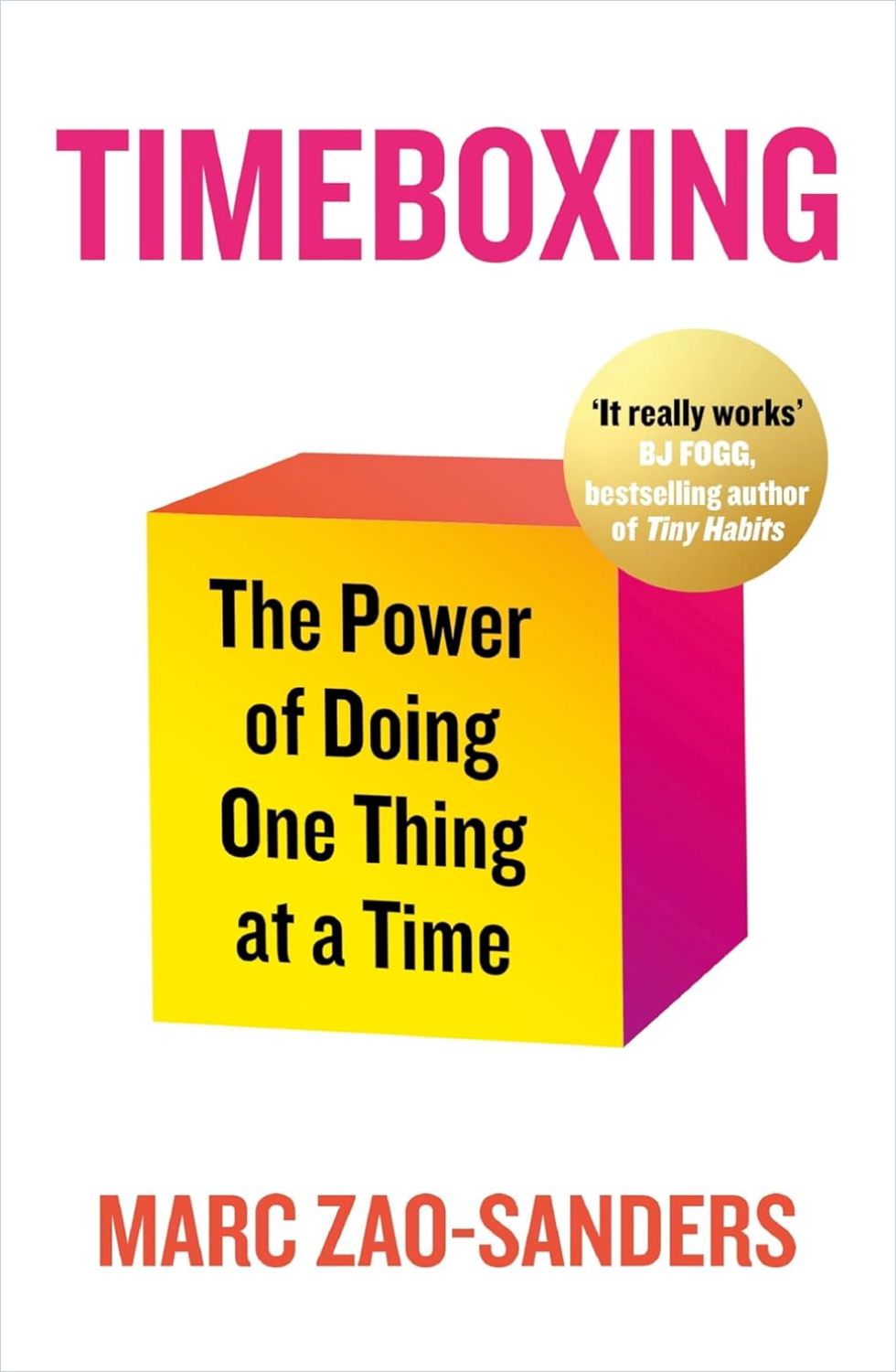Practically everyone struggles to make the best use of time. Marc Zao-Sanders, CEO of Filtered, a learning tech company, outlines a system for tackling your daily agenda — and finding peace in the process.

Taming Your Time
Overwhelm, distraction, procrastination, and the always-on work culture plague workers today. This toxic cocktail saddles people with anxiety, reduced performance, and, ultimately, exhaustion and burnout. Marc Zao-Sanders, CEO of Filtered, a learning tech company, offers a way out: a system for taming the chaos that he calls “timeboxing.”
Originally a concept from agile project planning, timeboxing means scheduling specific blocks of time to focus on and complete individual tasks. Zao-Sanders notes that timeboxing not only helps workers reclaim agency, reduce stress, and use their time better but can also dramatically improve goal achievement. In one study he cites, researchers asked two groups of students to perform a certain task. They instructed one group to timebox it and gave no specific instructions to the second group. Of those who used timeboxing, 75% completed the task, compared to only 33% of those who didn’t.
A Daily Ritual
Timeboxing works best as a daily practice, Zao-Sanders says. It involves entering every task on your daily to-do list into your calendar, specifying when each one will begin and end. Then, as you work through your day, you focus intently on each task, one at a time. You aim to complete each task to a satisfactory standard — and when time’s up, you move on. In this way, the system helps you combat Parkinson’s Law — that is, the tendency for tasks to expand to fill the time available. Timeboxing reverses this phenomenon, forcing tasks to contract to fill the time you’ve allotted for their completion — and preventing you from wasting time through procrastination, endless fiddling with details, and the fruitless pursuit of perfection.
Amid the chaos of the day and the call of countless duties, there is a reassuring calm — a power — in coming back to one thing at a time.
Marc Zao-Sanders
The timeboxing system starts with a to-do list. Each morning — or the night before, if you prefer — you sit down for 15 minutes to migrate items from your to-do list to your calendar, choosing a specific time to begin and end each task. Zao-Sanders walks the reader through the process of choosing times and durations for tasks. He covers how to take your energy levels and mood into consideration, how to bundle or break down tasks for logic and efficiency, how to estimate the amount of time you’ll need for each task, and how to account for dependencies and preexisting commitments.
Zao-Sanders also offers advice on scheduling breaks and choosing break activities that will replenish your energy based on your individual needs and preferences. He presents the system methodically, anticipating every possible question or glitch. The approach feels empathetic, compassionate, and practical.
Multiple Benefits
Zao-Sanders recommends using a digital calendar rather than planning your day on paper: The digital option makes it easier to synchronize your calendar across your devices, share your calendar or specific events with others, and find information by searching for keywords. One of timeboxing’s major benefits, Zao-Sanders says, is that it automatically creates an up-to-date, digital, searchable log of your tasks, which you can use to monitor your progress and highlight your achievements, such as during performance reviews.
Zao-Sanders points out that timeboxing offers many additional benefits — such as boosting your productivity, enhancing collaboration, and fostering well-being. The system helps you work smarter by acting as a framework for breaking work into stages and spreading large tasks across time. In this way, it can help you move purposefully through a long project, while combating a tendency to binge-work. Timeboxing also prevents multitasking, which can decrease productivity by as much as 40%, according to research Zao-Sanders cites.
Finish on time. Get the job done. Do not permit the perfect to be the enemy of the good. Good is usually good enough.
Marc Zao-Sanders
As you develop the practice of timeboxing, Zao-Sanders advises working to build the metacognitive ability to observe any intrusive thoughts that might interrupt your work and then shift your attention back to the task at hand. By the time you reach the middle of each timebox, you’ll ideally have achieved a state of flow — deep immersion in the task, where you experience high levels of concentration and intrinsic enjoyment.
Timeboxing provides peace of mind, Zao-Sanders says, because when you take control of your schedule, you’ll focus your energy more on the factors within your control and thereby experience less stress. And more broadly, by offering a structure for prioritizing tasks every day, timeboxing builds an intentional mindset. This helps you focus on your long-term goals and lead a more intentional life.
A Habit Former
Zao-Sanders suggests timeboxing can also act as a meta-habit — a foundational habit that can help you build and manage other habits. He references the behavioral model of scientist BJ Fogg, whose research shows people will execute a desired behavior if they possess both the motivation and the ability to perform the behavior, as well as prompts to promote action. Timeboxing can assist you in applying these three elements to build new habits, Zao-Sanders says. For example, you could create an evening sleep ritual by timeboxing your light exposure, exercise, and sleep preparation.
All we can be sure of, out of the entirety of the universe, is that we’re here for a few decades, during which we get to make a few decisions. Let’s use them to choose the life we really want.
Timeboxing also shares certain qualities with mindfulness, Zao-Sanders observes: Both aim to maintain attention on the present moment, encourage self-awareness, and reduce stress. Timeboxing and mindfulness can reinforce one another, he says, as timeboxing can serve as a stepping-stone to deeper forms of mindfulness, and mindfulness can enhance your practice of timeboxing.
Zao-Sanders points out that you can’t timebox everything in life, as predicting chance events that might demand your energy and focus is impossible. But timeboxing what you can predict will help you feel less overwhelmed and create space to handle the unexpected. Once you make timeboxing a habit, he says, you’ll encounter a profound truth that’s both freeing and humbling: You can choose what you do with your time and how you do it — the rest is out of your control.









